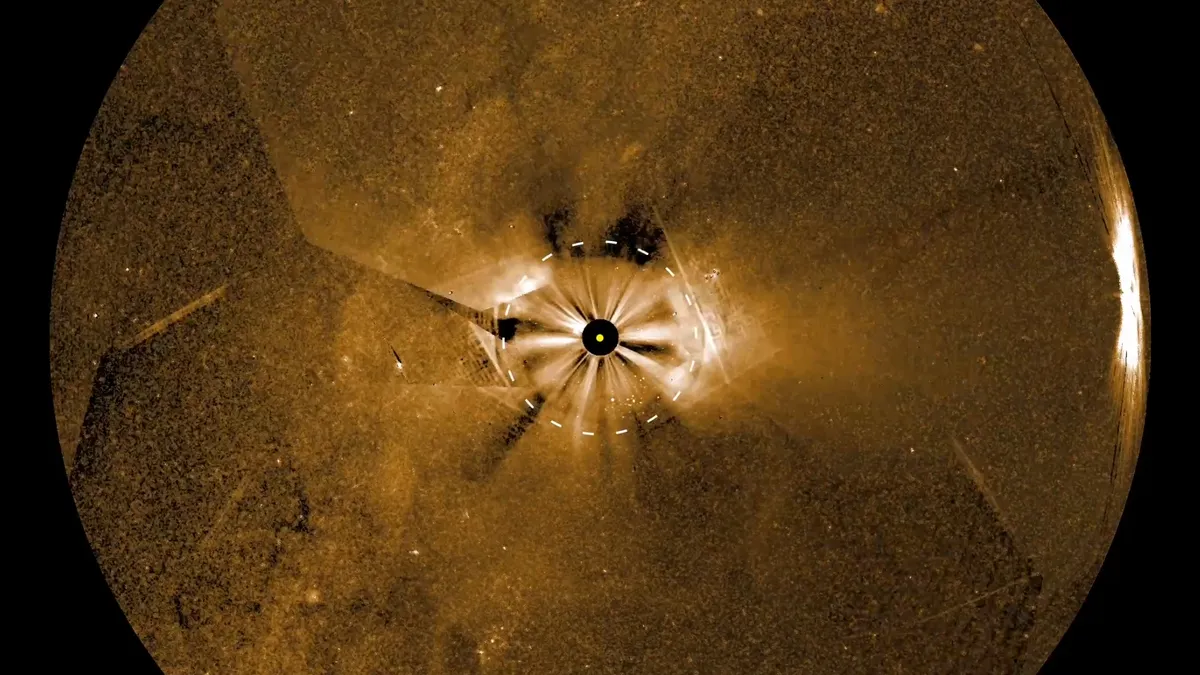
NASA's PUNCH mission has made a significant breakthrough by unveiling its first images of colossal solar eruptions known as coronal mass ejections (CMEs). This groundbreaking initiative offers an unprecedented, wide-field view of how these solar storms traverse through the inner solar system, enhancing our understanding of their effects on space weather.
Coronal mass ejections are enormous plumes of plasma and magnetic fields expelled from the sun. When these CMEs are directed towards Earth, they can instigate geomagnetic storms that disrupt satellite operations, GPS functionality, and pose significant risks to astronauts in space. These geomagnetic storms also have the potential to supercharge auroras, resulting in breathtaking light displays that can be observed beyond their typical geographical latitude ranges.
In-depth understanding of the mechanisms that drive space weather is crucial for protecting satellites, astronauts, and various infrastructures on Earth. By studying CMEs, scientists will be better equipped to predict when dramatic aurora displays are likely to occur, thereby enhancing our preparedness for these spectacular natural phenomena.
The new CME images, captured from late May to early June 2025 by three of PUNCH’s four spacecraft, were presented on Tuesday during the 246th American Astronomical Society meeting held in Anchorage, Alaska. This milestone marks a significant advancement in solar observation, providing researchers with new tools to explore the sun's activity.
The PUNCH spacecraft is equipped with four cameras that work in unison to create a virtual instrument capable of tracking CMEs across the inner solar system with unprecedented detail. Craig DeForest, the PUNCH principal investigator from the Southwest Research Institute's Solar System Science and Exploration Division in Boulder, Colorado, expressed enthusiasm about the mission's potential, stating, "These first images are astonishing, but the best is still yet to come." He emphasized that once the spacecraft are in their final formation, they will routinely track space weather in 3D across the entire inner solar system.
A remarkable stitched video sequence showcases massive CMEs billowing outward in all directions, with some heading directly toward the camera. Notable celestial objects in the backdrop include the moon, Venus, Jupiter, and the constellation Orion. The moon appears as a bright object on the left side of the frame, while Orion is situated at the bottom left. Jupiter can be found just left of center, and Venus is located on the far right. The sun itself is marked by a yellow dot at the center, with a dashed white circle representing the field of view of the older LASCO C3 coronagraph on NASA-ESA's SOHO spacecraft.
The fourth spacecraft's Narrow Field Imager (NFI), a coronagraph designed to block the sun's intense light, successfully captured a CME in exquisite detail on June 3. This bulb-shaped eruption emerges above the obscured sun, showcasing the instrument's remarkable capability to observe the sun's outer atmosphere in exceptional detail.
The PUNCH mission was launched atop a SpaceX Falcon 9 rocket at 11:10 p.m. EST on March 12, 2025 (0310 March 12 GMT), alongside the SPHEREx space telescope. The mission comprises four small satellites operating in a sun-synchronous orbit, maintaining a consistent 'fixed' position relative to the sun. Over its planned two-year mission, PUNCH aims to deliver continuous, global 3D observations of the sun’s outer atmosphere and the inner solar system.
By meticulously tracking how solar material escapes to form the solar wind, scientists are hopeful to gain a clearer understanding of space weather phenomena, including powerful events like CMEs and solar flares. Ultimately, this research could lead to improved forecasts of the impacts of space weather on satellites, astronauts, and technological systems here on Earth.